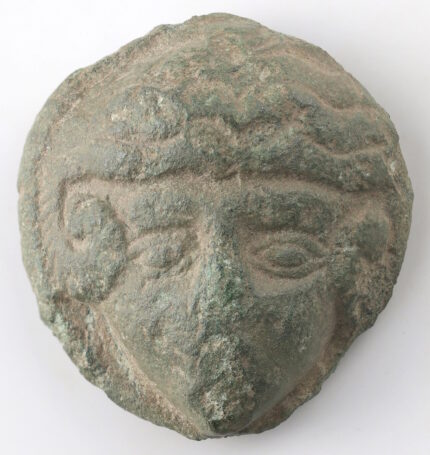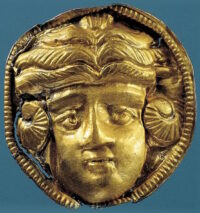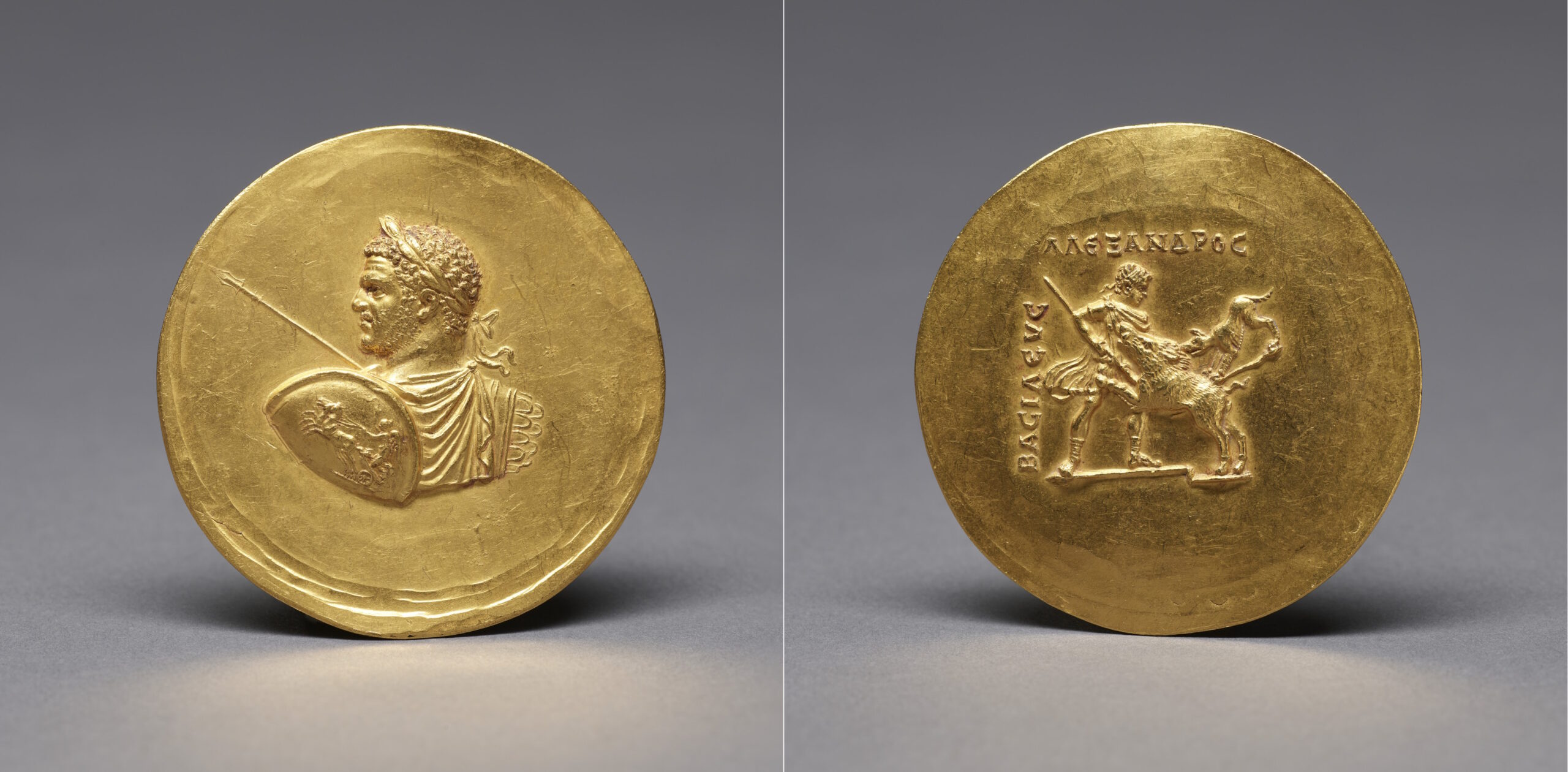
The portrait is heavily worn, and the finders did not immediately recognize the face as bearing the attributes of Alexander the Great. The fact that it was a face and seemed ancient was more than exciting enough, so they turned in the object to cultural heritage authorities. Roman Iron Age specialist Freerk Oldenburger, an archaeologist at Museum Vestsjælland, examined the piece and recognized it as an image of Alexander the Great.
The size and shape of the piece suggests it was a fitting, perhaps a decorative element on a shield, scabbard or belt. The lead contents of the bronze alloy points to a Roman origin of the metal as Roman bronzes were cast with the same alloy. Indeed, the relief itself may have be of Roman manufacture.

When the Alexander fittings were made in the early 3rd century, the Roman Empire was ruled by Septimius Severus (r. 198-211 A.D.) and his eldest son Caracalla, followed later by his younger son Geta. Caracalla was just 10 years old when Septimius took the throne and made his eldest co-emperor, so it took a few years for him to make any real power moves of his own and he only became sole emperor after he killed his younger brother Geta practically before their father’s body was cold. Caracalla, like most Roman military men, hero-worshipped Alexander, a theme that certainly would have accompanied him on his campaign to Britain with his father (208-211 A.D.) and his own campaign against the Alemanni in Germania Superior and Raetia (today part of southern Germany, Switzerland and Austria) in 213-214 A.D.
His full obsession with Alexander kicked into high gear right after the German campaigns. Here’s how Herodian describes it in Roman History 4.8.1-4.8.2:
Caracalla, after attending to matters in the garrison camps along the Danube River, went down into Thrace at the Macedonian border, and immediately he became Alexander the Great. To revive the memory of the Macedonian in every possible way, he ordered statues and paintings of his hero to be put on public display in all cities. He filled the Capitol, the rest of the temples, indeed, all Rome, with statues and paintings designed to suggest that he was a second Alexander.
At times we saw ridiculous portraits, statues with one body which had on each side of a single head the faces of Alexander and the emperor. Caracalla himself went about in Macedonian dress, affecting especially the broad sun hat and short boots. He enrolled picked youths in a unit which he labeled his Macedonian phalanx; its officers bore the names of Alexander’s generals.
Even before Caracalla claimed to be his reincarnation and plastered his images everywhere, Alexander was an enormously popular figure for military accessories. How a portrait of Alexander as Zeus-Ammon made its way to Ringsted is unknown, but the battle of Illerup Ådal took place around the same time, and the silver gilt version of the fitting reached even further north.
“There have been trade routes, there have probably also been people in Roman military service, it may also be the Germans themselves who have traded in these things. So there can be many ways it ended up here,” says Freerk Oldenburger.
It is also not certain that people in the Ringsted area at the time were aware of who the face represented.
“The possibility is that they saw one of their own gods in it. There were also Germanic shield mounts with other faces, the meaning of which we do not know with complete certainty, but which probably represent local warriors.
But I actually think they knew it. Alexander’s myth had been so big in Europe, Asia and North Africa.”
The bronze Alexander the Great fitting will be exhibited at Ringsted Museum Saturday, April 13th, and Freerk Oldenburger will give a presentation about it.
* This article was originally published here









No comments:
Post a Comment